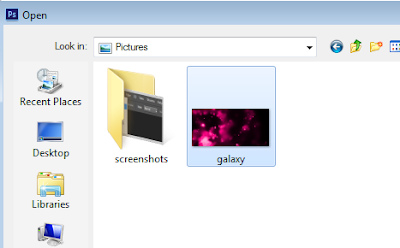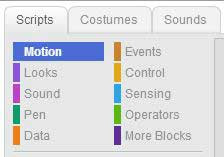 |
| This guide provides a list of all the main video game genres |
List of video game genres...
Most games fall within a particular category or genre. Some bridge different gaming styles and, thus, could appear under more than one category simultaneously. Video game genres are used to organize video games based on their game-play interaction rather than visual or narrative differences. For example, a shooter game is still a shooter game, regardless of whether it takes place in a fantasy world or in outer space. This article provides a list of all the main game genres with the features of each genre explained and example given.
The genres discussed in this article are shooter, first person shooter(FPS), adventure, action-adventure, real time strategy (RTS), turn based strategy, role playing games (RPG), massively multiplayer online role playing game (MMORPG), simulation, sports, dance/rhythm, puzzle, platformer, fighting and survival horror.
As with nearly all varieties of genre classification, the matter of any individual video game's specific genre is open to personal interpretation while an individual game can also (correctly) belong to several genres at once.
Shooter Games:
 |
| Do these classic shooter games spark any memories for you...? |
One of the oldest genres of video game is the classic shooter. It has roots in the early 60s with Steve Russell's Spacewar! Shooters are games that require the player to blow away enemies or objects in order to survive and continue game play.
Classic shooter game examples include Defender, Galaga, R-Type, Phoenix, Space Invaders, Tempest, Xevious, and Zaxxon
In summary, the main identifying features of a shooter game are...
- Game objective is to kill/shoot enemies/targets.
- Weapons and ammo can be collected or upgraded in game.
- Scoring system based on kills/hits.
- Simple game objective with very little plot.
- Specialised gun controllers often used e.g.. Super Nintendo's Duck Hunt.
First-Person-Shooter (FPS) Games:
 |
| Do you recognise these First-Person-Shooter (FPS) games? |
This is an example of a sub-genre that has grown enough to become its own genre. In fact, because of the prevalence of these games, many people use the term "shooter" to refer to first-person-shooters. These games are real time fast-paced action games in which the player navigates an environment from a first-person perspective and, usually, blows everything and everyone away whenever possible. Though this is a relatively new genre (since the early 1990s), it has grown in popularity.
Examples of first-person-shooter franchises include Wolfenstein 3D, Doom, Duke Nukem 3D, Descent, Marathon, GoldenEye, Halo, Quake, and Time Splitters.
In summary, the main identifying features of a FPS game are...
- Player is “behind the eyes” of the game character.
- Gameplay is fast paced and typically require actions to be performed reflexively.
- Large selection of weapons and ammo.
- Often contain violent and graphic content.
Adventure Games:
 |
| can you identify these adventure games? |
Another of the first video game genres, especially from the computer platforms, was the adventure game. These were initially text-based games like Will Crowther's Collossal Cave and the original Zork games. There has always been a strong following for this genre because of the challenge of puzzle-solving and the general lack of violence. This has also made it popular for many non-traditional gaming demographics. In recent years, LucasArts and Cyan have been known for their contributions to the adventure genre.
Examples of adventure franchises include Zelda, Gabriel Knight, Indiana Jones, Maniac Mansion, Monkey Island, Myst, Police Quest, and Little Big Adventure.
In summary, the main identifying features of an adventure game are...
- Detailed plot and character background stories.
- Variety of game objectives/missions.
- Can usually switch between different camera views (first and third person).
- Puzzle solving or following clues usually form part of the gameplay.
Action Adventure Games:
 |
| Do you recognise any of these famous action adventure game characters...? |
An action-adventure game is a hybrid game genre that combines elements of the adventure game genre with various action game elements. The classic Tomb Raider and Legend of Zelda games are often said to be the birth place of this genre. It is perhaps the broadest and most diverse genre in gaming, and can include many games which could also be categorized under other narrower genres. However, this all encompassing genre has grown to become one of the most popular game genres of modern times with a mix of puzzle solving, gun toting, fast paced action combined with a detailing and evolving storyline.
Examples of action adventure franchises include Legend of Zelda, Tomb Raider. Uncharted, Grand Theft Auto, Arkham Asylum, Bioshock and Assasin's Creed.
In summary, the main identifying features of an adventure game are...
- Faster paced and more violent than adventure games
- Gathering items into inventory.
- Conversing and learning from Non Playing Characters (NPC's)
- Puzzle solving or following clues usually form part of the gameplay.
- Combination of simple adventure controls with reflective actions of action or shooter games
Platform Games:
 |
| the platformer genre has remained relatively unchanged throughout the years |
It is believed that the platform genre began in 1981 with the release of the games Donkey Kong and Space Panic. Games within this genre are usually identified by navigating environments that require timing and jumping in order to reach a destination while avoiding and/or disposing of enemies. Many of these, like Donkey Kong, have a series of screens, each with its own individual pattern of challenges. As companies began to develop platform games for home consoles and computers instead of arcade machines (i.e. Super Mario Bros for the Nintendo Entertainment system), they took advantage of the evolving processors and greater memory capacity by transcending individual screens and utilizing actively side-scrolling worlds.
Classic platformer games include Pitfall, Super Mario Bros, Sonic the Hedgehog, Super Mario 64, Little Big Planet and Super Mario 3D Land
In summary, the main identifying features of a platformer game are...
- Gameplay focusses on navigating a level via jumping from platform to platform
- Timing of jumps and avoiding enemies are also key gameplay features
- Missing a platform usually results in the death of character and re-spawn.
- Character usually has lives as opposed to a health bar.
Role-Playing Games (RPGs):
 |
| Have you taken on the role of any of these classic RPG characters? |
Evolving from pen-and-paper games like Dungeons and Dragons, RPGs are a special type of adventure game that usually incorporate three major elements: 1) a specific quest, 2) a process for evolving a character through experience to improve his/her ability to handle deadlier foes, 3) the careful acquisition and management if inventory items for the quest (i.e., weapons, armor, healing items, food, and tools). Although these games still have many variations and appearances.
Classic RPG's include Dragon Quest, Final Fantasy Series, Elder Scrolls, Mass Effect and Fallout
In summary, the main identifying features of a RPG game are...
- Player plays as a single avatar that they customise as the game evolves.
- Character abilities also evolve and develop as the game progresses.
- Game objective is usually a large overall quest broken down into smaller missions.
- Collecting items to an inventory for later use.
- Meeting and conversing with Non Playing Characters
Massively Multiplayer Online Role Playing Games (MMORPGs):
 |
| These MMORPG brands have seen millions of players |
A massively multiplayer online role playing game is an evolution of the RPG genre which is set in a persistent virtual world populated by thousands of other players. MMORPGs can be viewed as evolving from text-based MUDs in mid-to-late 1990s. The first highly popular MMORPG was Ultima Online whilst World of Warcraft holds the honour of being the current most popular. Apart from MMOPRGs there are also sizeable communities around online first person shooters and strategy games, e.g. Battlefield 2
Famous MMORPG's include Ultima Online, World of Warcraft, TERA, The Elder Scrolls, Guild Wars, Rift and EVE Online.
In summary, the main identifying features of a MMORPG game are...
- A high speed internet connection is required to play.
- Thousands of players online simultaneously.
- Game is online and active constantly
- Paid accounts often required to play with in game purchases or upgrades also available.
Puzzle Games:
 |
| puzzle game screens tend to be bright and colourful |
In many ways, puzzle video games are not dissimilar from traditional puzzles in that the main objective is to solve a puzzle. What they offer are unique environments that are not as easily introduced in one's living room. For example, Wetrix enables the player to build up a series of walls that would be able to contain a deluge of water when it falls. Successful completion of a level involves capturing enough water. In recent years the growing popularity has led to a return to prominence for puzzle games with the likes of Candy Crush and Cut The Rope particularly popular.
Other examples include Tetris, Intelligent Qube, Puzzle Bobble, Wetrix, Puyo Puyo, Devil Dice, Mercury, The Room, Candy Crush, Cut The Rope and Wordament
In summary, the main identifying features of a puzzle game are...
- Objective is to solve a puzzle
- Intelligent as opposed to skills with game controls are key.
- Unique situation or setting forms the main game theme.
- Reaction times can also be tested as the game progresses. eg. Tetris
Simulation Games:
 |
| simulation games can allow you to experience a range of activities from the everyday to the extreme |
By their nature, simulations are attempts to accurately re-create an experience. These can be in the form of management simulations like Sim City and Theme Hospital, or more hands on like Microsoft Flight Simulator or Gran Turismo.
Sports Simulation:
Sports simulation games are a genre of video games which attempt to provide the player with a realistic interpretation of playing a specific sport.
Vehicle simulation:
Vehicle simulation games are a genre of video games which attempt to provide the player with a realistic interpretation of operating various kinds of vehicles.
Life Simulation:
Social simulation games base their game play on the social interaction between multiple artificial lives. The most famous example from this genre is Will Wright's The Sims.
In summary, the main identifying features of simulation games are...
- Replicate a real life experience as best as possible
- First person view or else controlling an avatar or avatars.
- Photo realistic graphics often used to enhance real life experience.
- Intelligent A.I. key to simulating a real life experience.
Real Time Strategy (RTS) Games:
 |
| RTS games require tactical and strategic planning alongside the overall gameplay and resource management |
Like simulations, strategy games attempt to capture a sense of realism for the game player to experience. Real time strategy games, as the name suggests, have an in game clock and the gameplay events progress in real time which means they can be highly addictive and time consuming. RTS games typically define a number of goals around resource collection, base and unit construction and engagement in combat with other players or computer opponents who also share similar goals.Emphasis is often placed upon managing logistics, resources and production. With the continuing development of online gaming and mobile gaming there has been a rise in multiplayer online mobile RTS games such as Sparta, Clash of Clans and Boom Beach.
Franchises that fall into this genre include Worms, Dune 2, Command and Conquer, Final Fantasy Tactics, Age of Empires, Dawn of War and Clash of Clans
In summary, the main identifying features of strategy games are...
- Gameplay events occur in real time
- Gathering and managing resources form key part of gameplay.
- Player often has a base to defend or a territory to mange and expand
- Can be played against A.I. or online against other players within the same game map.
Turn Based Strategy Games:
 |
| have you taken a turn at any of these turn based strategy games? |
Like simulations, strategy/tactics games attempt to capture a sense of realism for the game player to experience. However turn-based strategy games as opposed to real time strategy games give the player a greater sense of specific control over a situation without the pressure of a real time clock which can pressure the player into decisions. Turn based strategy games can also be considered an evolution of traditional board games such as monopoly, scrabble, chess and draughts/checkers.
Classic turn based strategy franchises include Civilisation, Total War, Endless Legend, Endless Wonders and Lord of the Realm.
In summary, the main identifying features of turn based strategy games are...
- Each player (or computer A.I.) take turns to make a move.
- Logical and tactical gameplay.
- Building alliances with other players and declaring war on others.
Sports Themed:
 |
| the quality and realism of graphics in sports games have improved immensely throughout history |
As you can imagine, sports games are those that simulate the playing of sports. Many of these have incorporated novel aspects beyond the games themselves and can therefore not be defined as simulation games. For example, most football video games like the Madden series enable the player to create and customise teams and play them for an entire season. Furthermore, many sports games include management elements beyond the games themselves. There is quite a bit of variety in this genre for fans of the games, the players, and the behind the scenes responsibilities of owning a team. Due to this variety in gameplay a sports theme game can also be correctly categorised into other game genres.
Popular Franchises in the sports game genre include John Madden Football, Tiger Woods’ Golf, Pro Evolution Soccer, Football Manager, Championship Manager and Tony Hawk Pro Skater.
In summary, the main identifying features of a sports themed game are...
- Replicate a particular sport but with additional features.
- Often associated with or promoted by a current/past sports personality.
- Real life clubs and players/athletes feature in the game so fans can play as their favourites.
- Realistic graphics key to the experience.
Fighting Games:
 |
| Street Fighter, Tekken and Mortal Kombat have been franchise mainstays of the fighter game genre |
These titles pit player against player (usually 2 players head-to-head) and involve one triumphing over the other. Many of these games include a single player mode, but the real draw to this genre is the ability to demonstrate one's gaming prowess against a friend.
Examples of franchises in this genre include Double Dragon, Street Fighter, Mortal Kombat, Tekken, Virtua Fighter, Dead or Alive, King of Fighters, and Bloody Roar.
In summary, the main identifying features of a fighting game are...
- Complex character controls for wide range of player movements
- One v one battles as part of tournament usually the game structure
- Increased opponent difficulty as tournament progresses.
- Player health bar the key HUD element
- Can be very violent eg. Mortal Combat
Dance/Rhythm Games:
 |
| this game genre ranges from singing to dancing to playing musical instruments |
Many require a specialised controller such as a Floor Mat, the Wii Controller and Balance Board, PlayStation Move, Xbox Kinect or an adapted musical instrument controller. This grouping of games is differentiated by the timed elements usually synced to music somehow.
Famous examples of this game genre include Parappa the Rapper, Bust a Groove, Frequency, Beatmania, Eyetoy Groove, Dance Central, Just Dance, Guitar Hero, Drums Challenge and Dance Star Party.
In summary, the main identifying features of a dance or rhythm game are...
- Timing a key part of gameplay.
- Most physically active of all game genres.
- Requires a specialised controller.
- Uses classic and contemporary music tracks within the game.
Survival Horror Games:
 |
| survival horror games are typically dark and atmospheric environments where enemies are hard to see never mind kill! |
As the name suggests, these titles are an interactive evolutionary step of the horror and survival genres and are an example of a hybrid game outgrowing it's origins. The main game play mechanic in these is to "survive" the environment that includes fantastic or supernatural elements that are very frightening and often disturbing. Many of these titles are rated mature because of they are not intended for younger audiences and often include graphic scenes.
Classic survival horror games include Alone in the Dark, Resident Evil, Silent Hill, Dead Space, FEAR, Until Dawn and The Last of Us.
In summary, the main identifying features of a survival horror game are...
- Usually first person view with atmospheric level design and lighting.
- Music and sound effects play a bigger part than in other game genres.
- 'Jump Scares' are a genre specific feature.
- In game combat not a primary feature with stealth and avoidance of enemies often the preferred approach.
Hybrid Games:
It's important to recognise that many games are not limited to a single genre. Some are the combination of two or more game types. In fact, as gaming evolves, we see lines blurred between genres more frequently than not. Since the introduction of 3D gaming, the action/adventure genre has grown dramatically. It is practically a catch-all category that incorporates 3D games with real time combat and puzzle-solving in a fairly cohesive storyline. Many of these games are also first-person-shooters. Some are 3D platform titles. Another example of a hybrid is Myst. It is both an adventure game and a puzzle game.
Quick Reference Guide...
 |
| click to view full size |












































